Pavement Marking Essential For Road Safety
Vivek Singh, Founder, BuildStreet delves into the significance of pavement marking, its objective, and importance, with a focus on Hot Applied Thermoplastic paint - the predominant choice for road markings in India, its technical aspects, application methodology, and the preventive actions at the time of application.
Road safety is of paramount concern in today’s world due to the continuous rise in the number of vehicles. One crucial element in ensuring road safety is pavement marking, which entails application of lines, symbols, and markings on the surface of roads, highways, and parking lots. These visual cues play a vital role in guiding drivers, reducing confusion, and improving road safety.
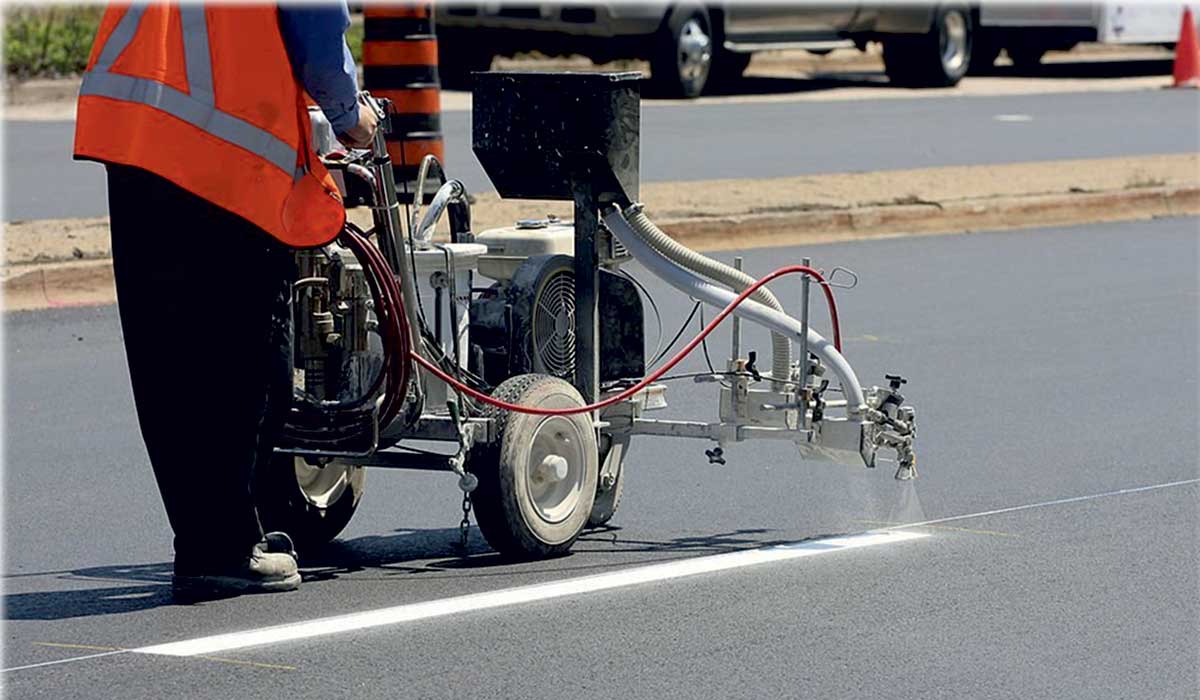
Road markings are applied for easy delineation of the road and the curves to regulate and direct traffic and are a fundamental cog in the intricate machinery of traffic control, steering drivers along the correct paths, demarcating road divisions, and pinpointing vital zones like pedestrian crossings and specialized lanes. They aid drivers in staying within their designated lanes, adhering to proper traffic flow, and complying with traffic signs and signals.
The markings are composed of reflective thermoplastic materials and are applied in a heated state to the pavement surface. Expertly embedded into the pavement surface, they serve as both a visual aid and a tangible guide for the ebb and flow of traffic. However, the efficacy of the markings hinges on their consistent maintenance and vigilance.
Ensuring the proper placement and maintenance of pavement markings is of utmost importance to ensure their ongoing effectiveness and visibility. It is imperative that all pavement markings are meticulously maintained to ensure optimal visibility during both daytime and night time conditions.
When it comes to highway marking paint, there are several categories, including solvent-based coatings, heat-based coatings, hot melt coatings (known as Hot Thermoplastic coatings), two-component coatings, water-based paint, and other variations.
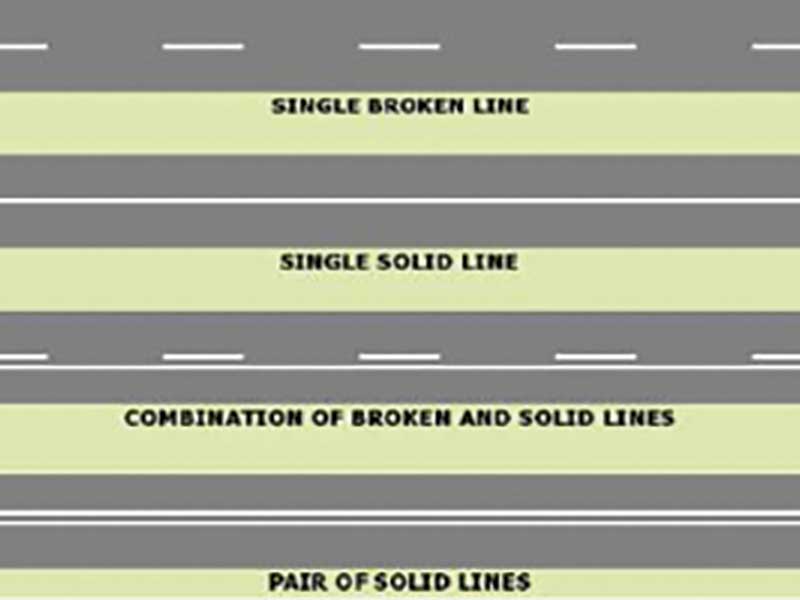 The main purpose of longitudinal marking is to guide and navigate the driver for forwarding movements and to prohibit overtaking manoeuvring at certain hazardous locations to avoid sideswipe and head-on collisions. Longitudinal markings are usually in white and yellow colour, where white is used prominently and yellow is used where it is strictly prohibited not to be straddled by the vehicles.
The main purpose of longitudinal marking is to guide and navigate the driver for forwarding movements and to prohibit overtaking manoeuvring at certain hazardous locations to avoid sideswipe and head-on collisions. Longitudinal markings are usually in white and yellow colour, where white is used prominently and yellow is used where it is strictly prohibited not to be straddled by the vehicles.
Types of longitudinal marking and what they indicate:
Types of longitudinal markings and what they indicate:
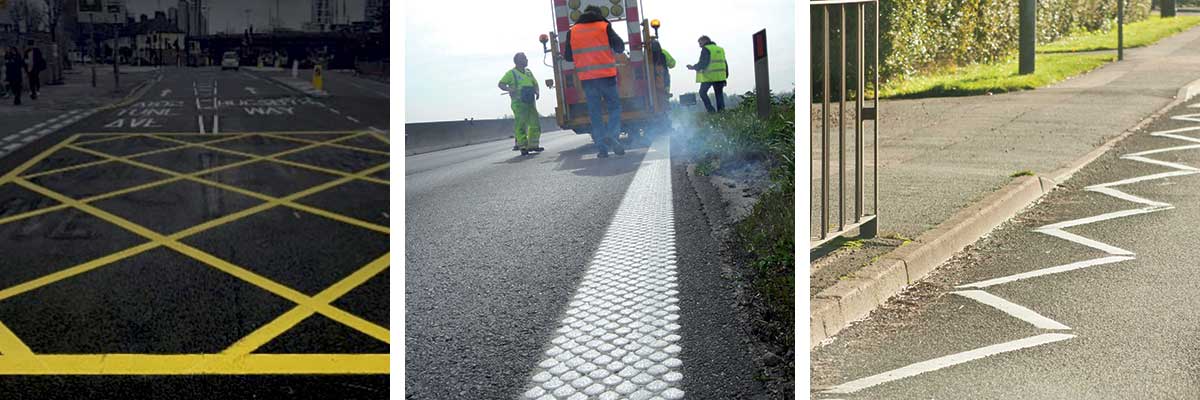
Types of hazard markings and what they indicate:
Types of Block Markings and what they indicate: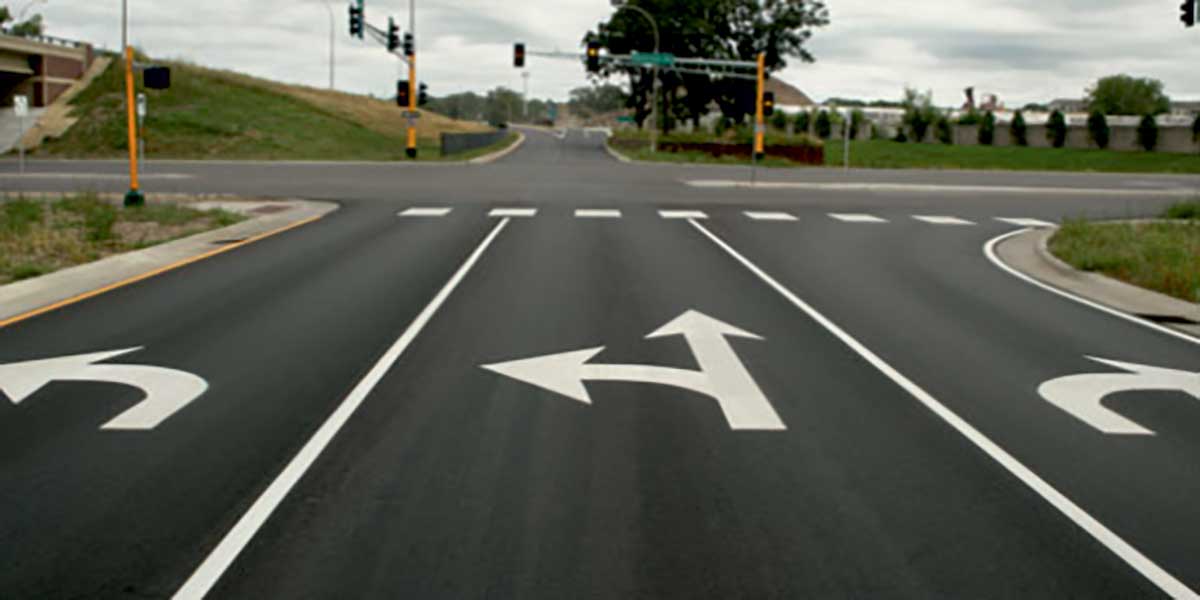
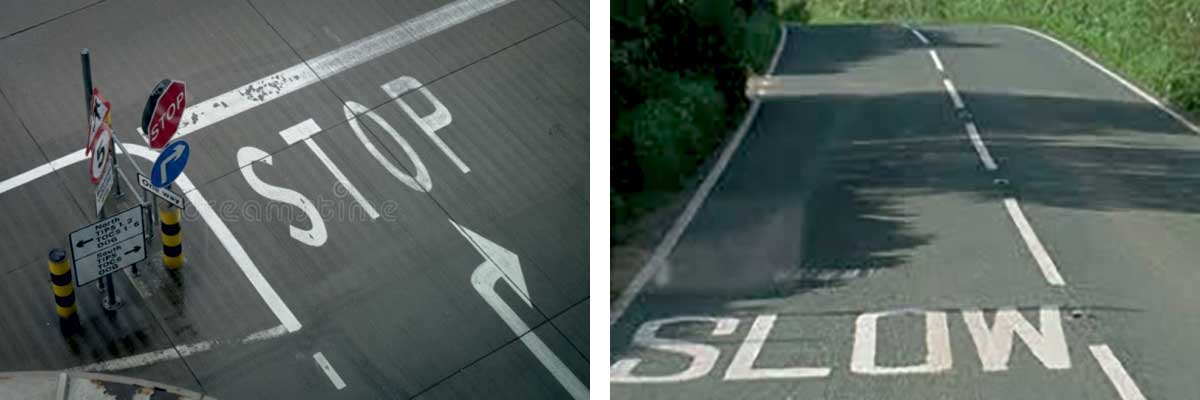
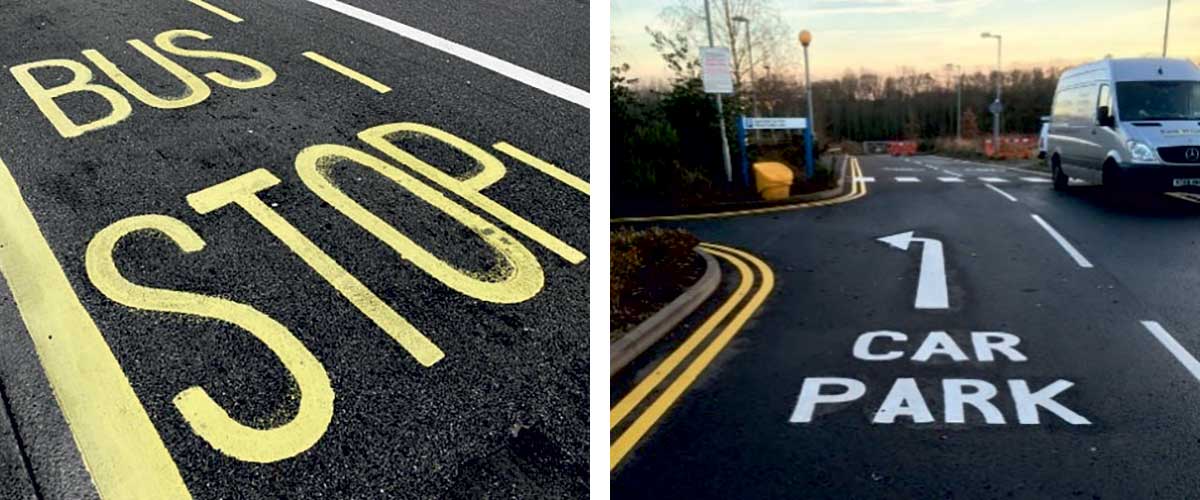
Remedy: Apply the marking again when damaged.
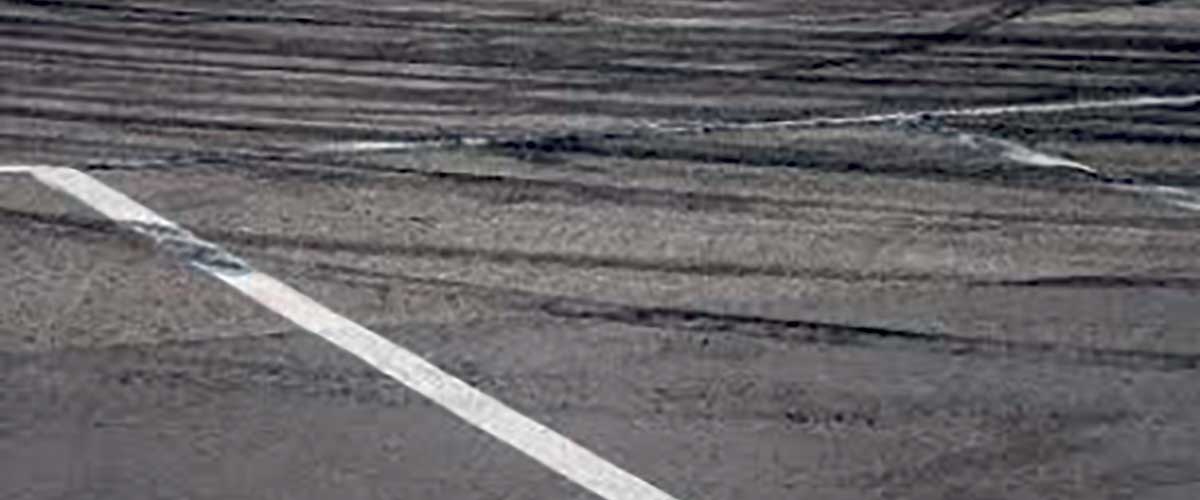
Remedy: Application of the paint should not be started after rain and until the road surface is completely dry.
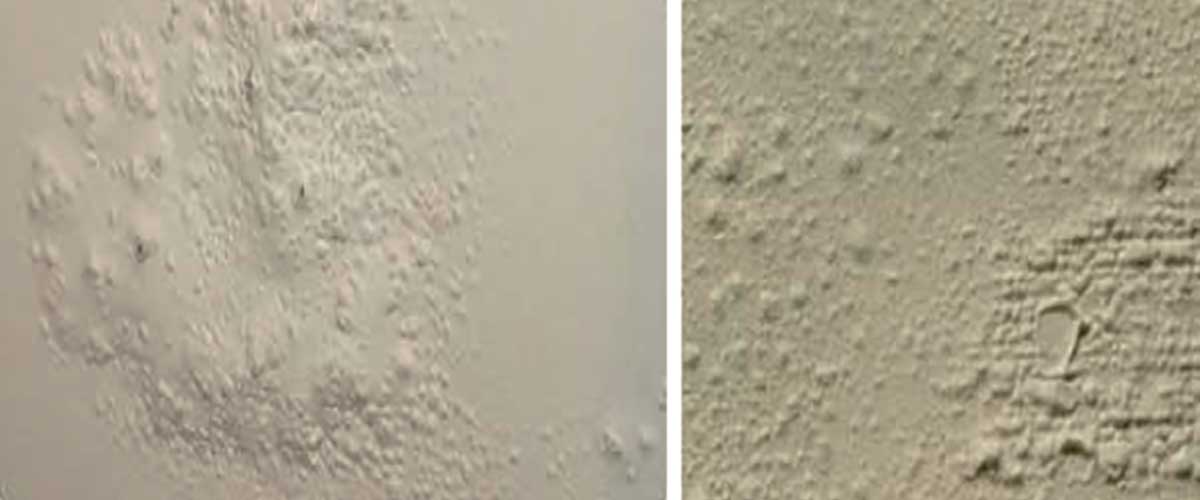
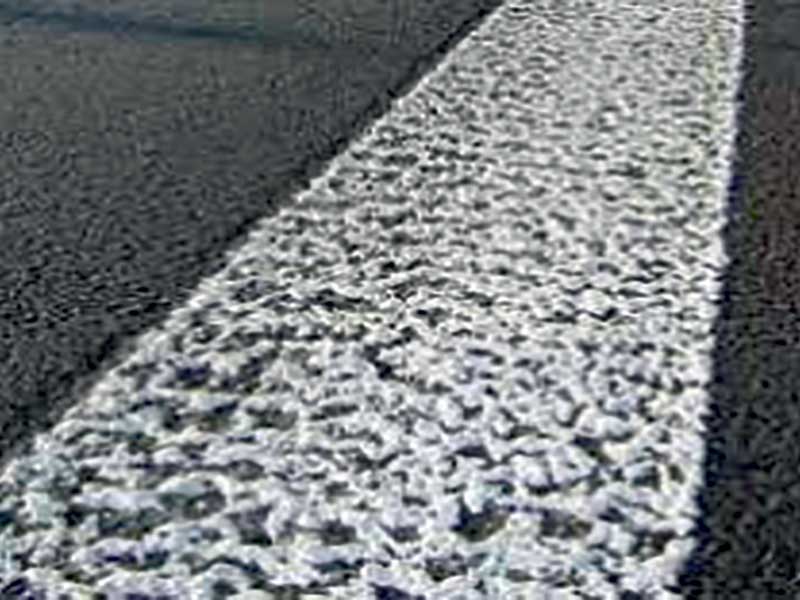 Cause: Due to high viscosity of the paint, the applied thickness becomes uneven during its application on the road surface. Although this might not affect the quality of the paint itself, it can still alter the appearance of the road markings and may even reduce its durability.
Cause: Due to high viscosity of the paint, the applied thickness becomes uneven during its application on the road surface. Although this might not affect the quality of the paint itself, it can still alter the appearance of the road markings and may even reduce its durability.
Remedy: Maintain temperature of the paint by heating it to the specified temperature (generally 200-220oC) and stir evenly to ensure homogeneous and uniform temperature to attain a good workable viscosity.
Remedy Strict control of the temperature, and continuous and thorough stirring must be ensured and material inspection done thoroughly meticulously prior to use.
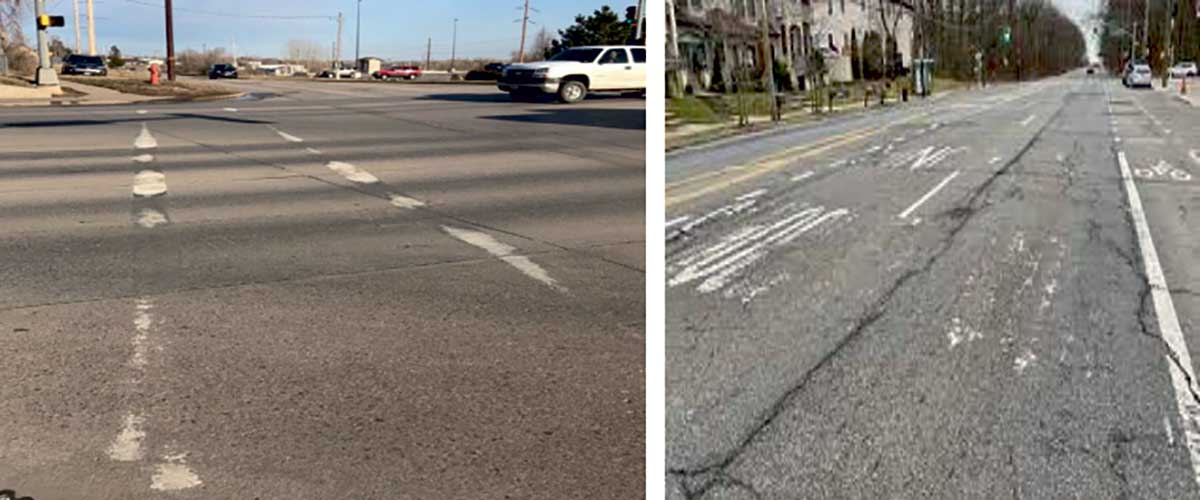
Solution: Calibrate the flow of glass beads beforehand. Proper wind screen to be provided on machine when the conditions are windy. Thorough material inspection must be done prior to use.
Solution: By ensuring the right material, right temperature, and proper cleaning of the surface, cracks can be avoided to a great extent.
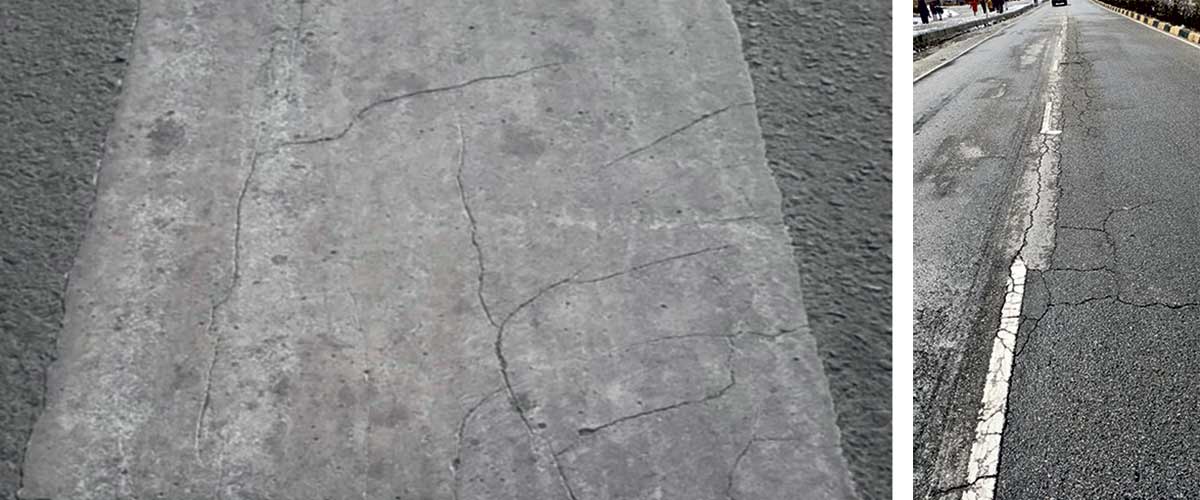
Solution: Choosing suitable viscosity and not allowing traffic to ply before paint is completely dry.
Road safety is of paramount concern in today’s world due to the continuous rise in the number of vehicles. One crucial element in ensuring road safety is pavement marking, which entails application of lines, symbols, and markings on the surface of roads, highways, and parking lots. These visual cues play a vital role in guiding drivers, reducing confusion, and improving road safety.

Road markings are applied for easy delineation of the road and the curves to regulate and direct traffic and are a fundamental cog in the intricate machinery of traffic control, steering drivers along the correct paths, demarcating road divisions, and pinpointing vital zones like pedestrian crossings and specialized lanes. They aid drivers in staying within their designated lanes, adhering to proper traffic flow, and complying with traffic signs and signals.
Application
Typically manifested in the form of solid boundary lines, dashed centerlines and pedestrian crossings, these markings provide a tangible representation of the road layout, aiding drivers in navigating curves and turns with precision. They also encompass specialized symbols and icons, such as directional arrows and exclusive lane designations like bus lanes. These markings aren’t just static; they are dynamic communicators that keep drivers informed and engaged with the road’s intricate dynamics.The markings are composed of reflective thermoplastic materials and are applied in a heated state to the pavement surface. Expertly embedded into the pavement surface, they serve as both a visual aid and a tangible guide for the ebb and flow of traffic. However, the efficacy of the markings hinges on their consistent maintenance and vigilance.
Ensuring the proper placement and maintenance of pavement markings is of utmost importance to ensure their ongoing effectiveness and visibility. It is imperative that all pavement markings are meticulously maintained to ensure optimal visibility during both daytime and night time conditions.
When it comes to highway marking paint, there are several categories, including solvent-based coatings, heat-based coatings, hot melt coatings (known as Hot Thermoplastic coatings), two-component coatings, water-based paint, and other variations.
Types of Pavement Markings
Pavement markings come in various types, each serving a specific purpose:- Longitudinal Marking
- Transverse Marking
- Hazard Marking
- Block Marking
- Arrow Marking
- Directional Marking
- Facility Marking
Longitudinal Markings

Types of longitudinal marking and what they indicate:
- Continuous/Solid Lines: No overtaking. Shall not be violated.
- Continuous/Solid double lines: Strictly no overtaking. Shall never be violated.
- Broken Lines: Traffic Lane Lines. Shall not be normally violated.
- Combined Broken and Continuous/Solid Lines: To be obeyed according to the line type on your side.
Transverse Markings
Transverse markings are provided across the carriageway for making the driver aware of risks. They help in speed reduction at crucial stretches viz. median openings, minor junctions, black spots etc. They are always accompanied by corresponding road signs.Types of longitudinal markings and what they indicate:
- Continuous/Solid lines: Risk ahead. Reduce speed.
- Continuous/Solid double lines: Major road ahead. Stop, Watch and Go.
- Broken Lines: Cross carefully.
- Broken double Lines: Give way.
- Set of Bar Markings: Risk warning/black spot ahead.
Hazard Markings
Hazard markings facilitate major actions by vehicles such as traffic merging/diverging, prohibiting crossing over, and deflecting traffic ahead of any hazardous situation. These markings are generally chevron and diagonal, hatch markings, and prohibitory markings.
Types of hazard markings and what they indicate:
- Deflecting/Transition: Change of width
- Zig-Zag: Warning against populated area, pedestrian crossing etc. Cannot stop in this zone.
- Transverse Bars: Same as Transverse Marking
- Raised Profile: Early warning of risk prone area, warning of changing lane, or going off the last lane.
- Chevron: Hazard indication, channelisation. Chevron marked area shall not be travelled upon.
- Box: Populated area, black spot.
Block Markings
These markings on roads are in blocks, such as at zebra crossings for pedestrians. They are triangular and checkered for speed breakers. Here, the quality of marking and adequate visibility is of utmost importance. The application of thermoplastic paint for block marking is generally different from longitudinal marking. Hazard marking shall always be accompanied by an appropriate sign.Types of Block Markings and what they indicate:
- Rectangular: Pedestrian crossing.
- Triangular: Junction ahead.
- Give Way: Priority to be given to traffic or major road ahead.
- With Symbols: Cycle for cycle track, etc
Arrow Markings
Arrows painted on carriageways are meant to give directions to drivers to take mandatory turns and to drive in the right lane. Classification of arrow marking are:- Straight
- Indicating Left/Right directions
- A combination of the above two

Directional Markings
The word message which is directional in nature is classified under directional marking. The messages can vary from speed limits to indicating School Zone, Parking, No Entry, etc.
Facility Marking
As the name indicates these markings are intended to inform about facilities like Parking, Bus Stop, Taxi Stand, etc.
Scope of Work and Quality Control
When applying road markings, it’s crucial to follow specific procedures and standards outlined in documents like MoRTH Specifications and IRC:35-2015. Quality control measures involve checking various characteristics, including drying time, thickness, skid resistance, and the rate of spray of glass beads.Defects on Road Markings and Maintenance
Stripping of road marking by tyres
Cause: Bleeding, honeycombing, or other forms of defects in the pavement surface can cause this type of damage to the road marking. Extremely heavy traffic, tyres containing soil and water, repeated exposure to tyres (viz. transverse markings).Remedy: Apply the marking again when damaged.

Bubbles/ Blisters on surface of road marking lines
Cause: When the application of hot thermoplastic paint is done over a moist road surface, the moisture vapourises due to heat after the paint is applied. This results in the formation of entrapped bubbles.Remedy: Application of the paint should not be started after rain and until the road surface is completely dry.

Surface of pavement marking line is sunken

Remedy: Maintain temperature of the paint by heating it to the specified temperature (generally 200-220oC) and stir evenly to ensure homogeneous and uniform temperature to attain a good workable viscosity.
Pre-Mature Peeling off and Discoloration
Cause: Too high temperature of the paint or burning of paint at the bottom of the kettle oxidises the paint pre-maturely and makes it brittle. The substandard quality of the material itself is also a likely reason of such defects.Remedy Strict control of the temperature, and continuous and thorough stirring must be ensured and material inspection done thoroughly meticulously prior to use.

Night reflectivity problem
Cause: Reflectivity of road markings at night is poor and less than required standards is mainly because of inadequate quantity or the poor quality of glass beads.Solution: Calibrate the flow of glass beads beforehand. Proper wind screen to be provided on machine when the conditions are windy. Thorough material inspection must be done prior to use.
Appearance of Cracks
Causes: Shrinkage and expansion of road surface due to weather conditions. Softened bitumen layer coated with relatively hard thermoplastic paint may crack later due to wheel impact load. Age and long-term exposure of the paint, poor temperature control during application, quality of material etc are some of the causes for the appearance of cracks in thermoplastic material.Solution: By ensuring the right material, right temperature, and proper cleaning of the surface, cracks can be avoided to a great extent.

Blackening
Cause: This type of defect is mainly due to tyre indentation and scarring. High viscosity during coating and also during plying of traffic are other reasons.Solution: Choosing suitable viscosity and not allowing traffic to ply before paint is completely dry.
Components and Application of Thermoplastic Paints
- Binder: Prevents early fracturing of the material.
- Glass beads: Provide retro reflectivity in road markings.
- Titanium Dioxide: Provides whiteness, luminance, retro-reflectivity, and resistance to UV light in road markings.
- Calcium Carbonate and Inert Fillers.
- Pigment: Gives colour to road markings.
- Storage life of material should be one year.
- Gradation
- Roundness
- Refractive index
- Free flowing properties.
Equipment
Thermoplastic Paint applicator with storage, heating and stirring devices. This machine applies thermoplastic paint by screeding/extrusion and has the provision to spray glass beads as a simultaneous operation. A mini truck (Tata 408 or equivalent) is required to carry the material and other supporting equipment.Laying Procedures
Setting out
- The surface is cleaned of all dust, grease, oil, and loose foreign particles
- If required, the surface is scrubbed and washed
- Plotting of points on the carriageway for centreline and edge line markings
- Marking of centreline / edge line using string and chalk method
- Primer is applied on concrete road surface
Applying
The thermoplastic paint is heated to the specified temperature and applied on the road surface with a thickness of 2.5mm, excluding glass beads (unless specified otherwise). Glass beads are spread simultaneously at the rate of 250g/m2. The finished lines are made free of ruggedness on sides and ends and made parallel to the general alignment of the carriageway. The upper surface of the lines is to be level, uniform, and free from streaks.Performance check
The performance is measured based on day and night time visibility, wet reflectivity, wear durability, and skid resistance. IRC:35 gives detailed guidelines for the performance checking, based on the design speed of the road and time elapsed after road marking was done.Conclusion
Pavement markings are a vital component of road safety and traffic management. They serve as a visual guide for drivers, helping them navigate the road safely and efficiently. In India, Hot Applied Thermoplastic paint is the preferred choice for road markings due to its durability and reflective properties. Proper maintenance and quality control measures will ensure the longevity and effectiveness of pavement markings, which are essential for making roads safer and more organized.
NBM&CW October 2023


















